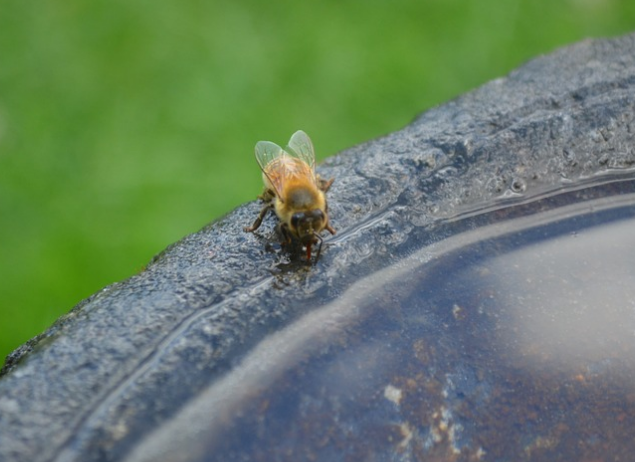Bee-killing Pesticides Found in Great Lakes Water
Published on by Water Network Research, Official research team of The Water Network in Academic
A recent scientific study found the presence of commonly-used pesticides known to harm bees ("neonicotinoids" or " neonics ") in several Great Lakes waterways.
This study shows we know very little about the effects of pesticides once released into the environment.

Representative image, source: Pixabay
According to Kara Cook-Schultz, Pesticides Director at U.S. PIRG Education Fund, "The results of this study show that these pesticides stay in our water after they're sprayed--that the pesticides persist in the environment long after they're applied to farms and homes.”
The study is the first to show that these pesticides—which have gained notoriety in recent years as a prime suspect in bee deaths—are persistent in the world’s largest freshwater system, the Great Lakes. The study also suggests Great Lakes’ drinking water, fish, birds, and entire ecosystems might be at risk.
Neonicotinoids are the most heavily used insecticides on the planet—designed to attack the nervous systems of insects and protect crops from damage. Once thought to be relatively innocuous to wildlife higher up the food chain, scientists are increasingly reporting toxic effects. The chemicals are linked to bee die-offs. Last summer a major study in Science reported bees near cornfields exposed to neonicotinoids for a few months via pollen suffered from decreased survival and poor immune systems. In birds, exposure to the chemicals has been linked to population declines.
Michelle Hladik, lead author of the new study and a research chemist at the U.S. Geological Survey, said the major risk of these chemicals is to aquatic insects—an effect that could ripple up the food chain.
“If these pesticides are affecting aquatic insects, causing lower populations, it could affect the food chain by removing a food source," she said.
Prior to the study little was known about the chemicals’ presence in the Great Lakes region. From October 2015 to September 2016, Hladik and colleagues took monthly samples from ten rivers that all drain into the Great Lakes, finding these pesticides in Ohio, New York, Indiana, and Wisconsin.
They found at least one insecticide in 74 percent of the samples and found three neonicotinoids in 10 percent of the samples. The concentrations increased in spring and summer months—suggesting planting of insecticide-treated seeds is behind the spike. The pesticides are also used by non-farmers in the spring/summer in garden and landscaping sprays and products.
Kerzee pointed out that a large percentage of the chemicals detected came from urban areas. This shows that gardening and “urban use of pesticides has a substantial impact on the health of our waterways,” she said.
Read full article: US Pirg
Paper: Year-round presence of neonicotinoid insecticides in tributaries to the Great Lakes, USA
Media
Taxonomy
- Contaminant Removal
- Agricultural
- Pollution
- Contaminant Movement Mapping
- Pesticides
- Fertilizers and Pesticides
- Agriculture
- Pesticides
- Animal Health